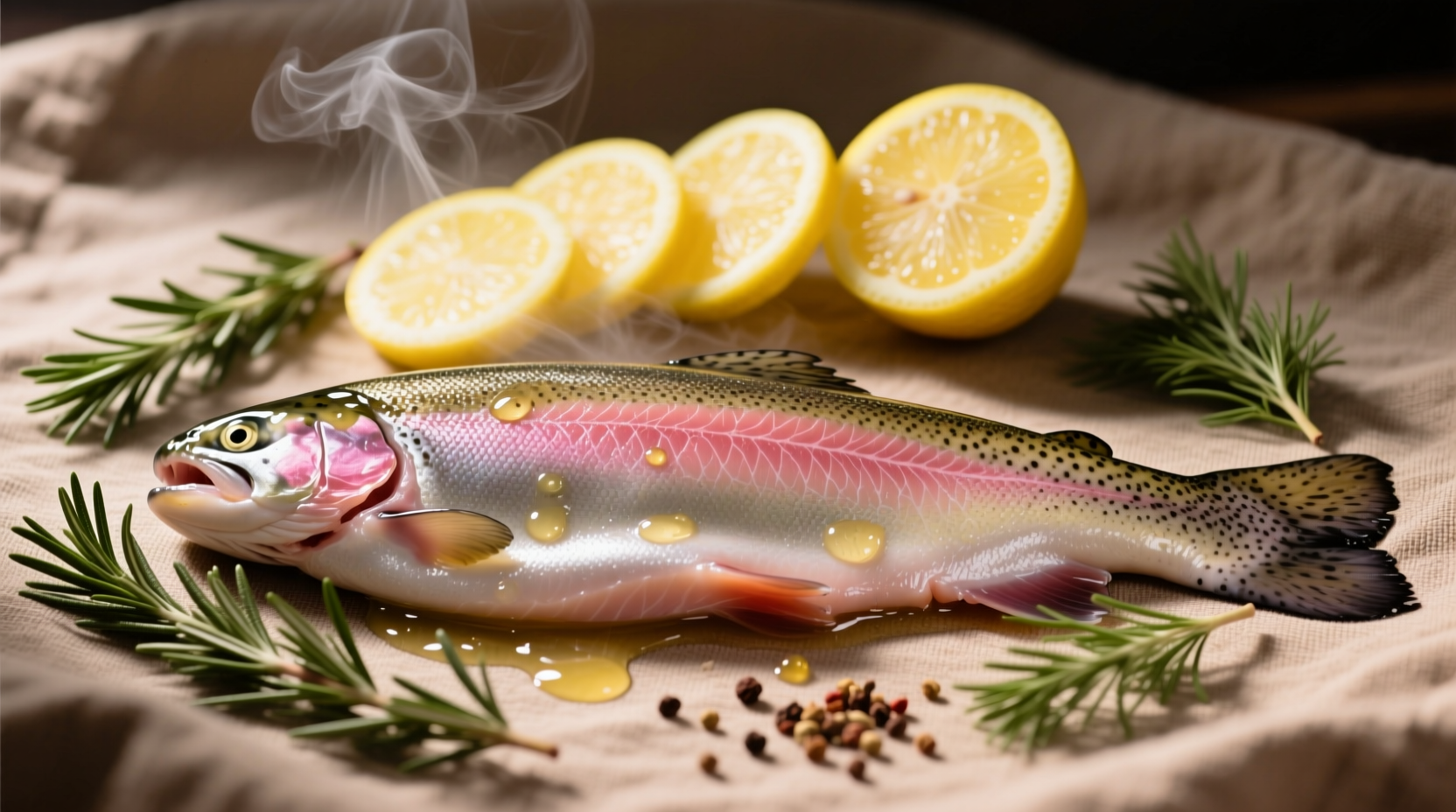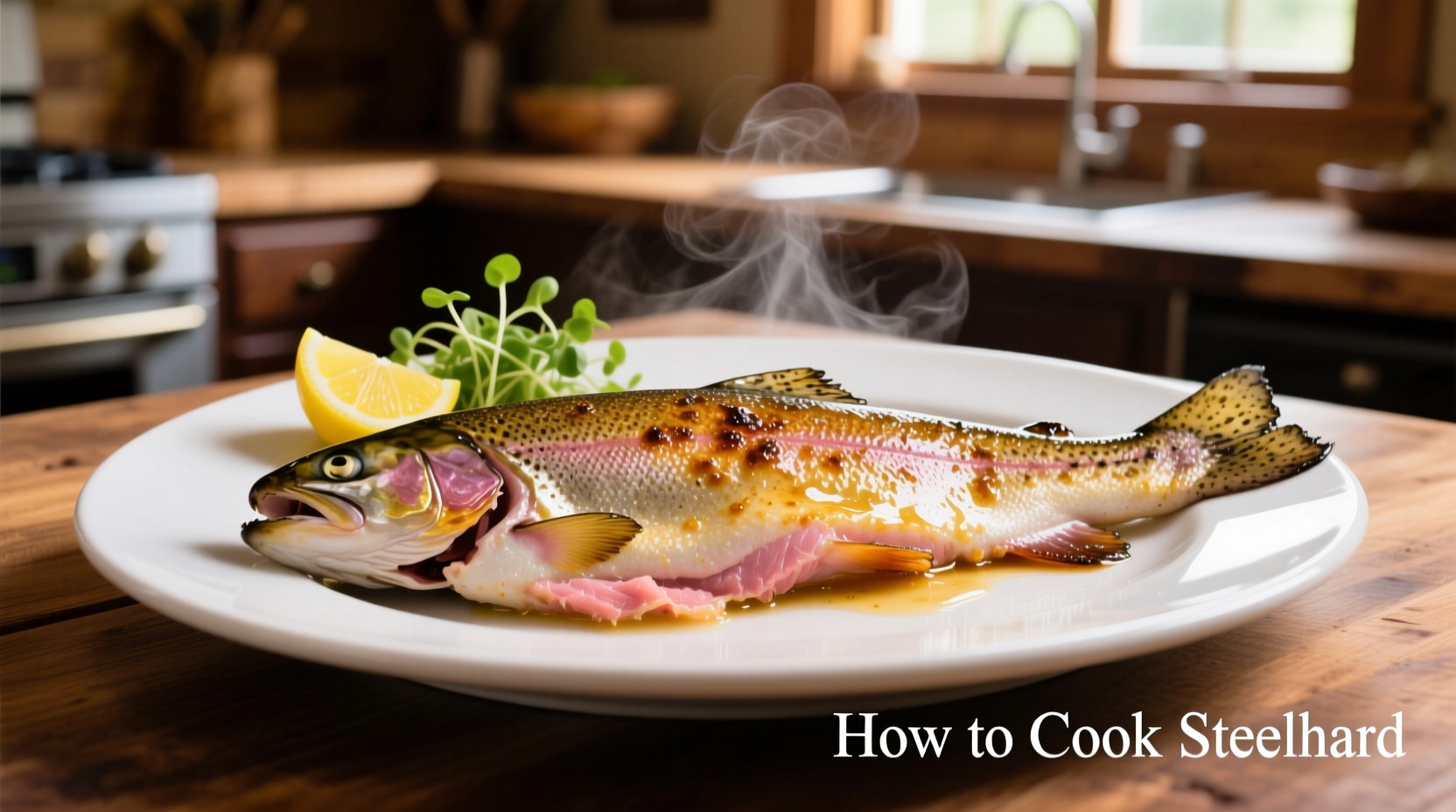Why Steelhead Deserves Your Attention
Steelhead trout often gets overshadowed by salmon, but this sustainable fish offers comparable omega-3 benefits with a more delicate flavor profile. Unlike salmon, steelhead maintains moisture exceptionally well during cooking when handled properly—a crucial advantage for home chefs. According to the FDA's seafood guidelines, steelhead provides 1,700mg of omega-3s per 3-ounce serving, making it one of the most heart-healthy fish options available.
Steelhead vs. Salmon: Key Differences You Must Know
| Characteristic | Steelhead Trout | Salmon |
|---|---|---|
| Habitat | Anadromous (freshwater/saltwater) | Primarily saltwater |
| Flavor Profile | Milder, less oily | Richer, more pronounced |
| Cooking Time | 12-15 minutes at 375°F | 15-20 minutes at 400°F |
| Sustainability | Generally better rated (Seafood Watch) | Varies by species/region |
Selecting Quality Steelhead
Choose steelhead with firm, translucent flesh that springs back when pressed. Fresh steelhead should smell like clean ocean water—not fishy. The Monterey Bay Aquarium's Seafood Watch program recommends looking for ASC (Aquaculture Stewardship Council) certification for farmed steelhead, which ensures responsible farming practices. Wild steelhead from Pacific Northwest rivers offers exceptional flavor but check seasonal availability—May through September typically provides the best quality.
Preparation Techniques That Make the Difference
Never skip the 15-minute brine step: dissolve 1 tablespoon salt and 1 tablespoon sugar in 1 cup cold water, submerge fillets for optimal moisture retention. Pat thoroughly dry with paper towels before cooking—this critical step creates the perfect sear. For skin-on preparations, score the skin diagonally every inch to prevent curling during cooking. Professional chefs always bring steelhead to room temperature 20 minutes before cooking for even heat distribution.

Cooking Methods Compared: When to Use Each
Understanding your cooking context determines the best method. These techniques work for 6-ounce fillets:
Pan-Searing (Best for Weeknight Dinners)
- Heat 1 tbsp oil in cast-iron skillet over medium-high heat
- Cook skin-side down for 6-7 minutes until crisp
- Flip and cook flesh side 5-6 minutes until internal temperature reaches 125°F
- Rest 3 minutes before serving
Baking (Most Forgiving Method for Beginners)
- Preheat oven to 375°F (190°C)
- Place fillets on parchment-lined baking sheet
- Cook 12-15 minutes until flesh flakes easily with fork
- Check temperature at thickest part—125°F indicates perfect doneness
Grilling (Ideal for Summer Cooking)
- Preheat grill to medium-high (375-400°F)
- Oil grates thoroughly and place fillets skin-side up
- Cook 8-10 minutes with lid closed
- Flip carefully only if skin sticks—often better left undisturbed
Flavor Pairing Science
Steelhead's delicate flavor pairs beautifully with acidic components that enhance without overwhelming. Create balanced flavor profiles using these professional combinations:
- Lemon-dill compound butter—melt over cooked steelhead for instant restaurant-quality finish
- Maple-mustard glaze—combines sweetness with acidity (¼ cup maple syrup + 2 tbsp Dijon mustard)
- Citrus-herb marinade—orange juice, olive oil, thyme, and garlic for 30 minutes maximum
Avoid overpowering spices—steelhead shines with subtle seasoning. A simple preparation of salt, pepper, and lemon zest often proves most satisfying.
Avoid These Common Steelhead Mistakes
Based on culinary research from the USDA Food Safety and Inspection Service, these errors ruin otherwise good steelhead:
- Overcooking—steelhead continues cooking while resting; remove at 125°F for perfect 130°F final temperature
- Skipping the rest period—always rest 3-5 minutes to redistribute juices
- Using wet fillets—moisture prevents proper searing and creates steam instead of crisp skin
- High-heat rushing—cooking above 400°F causes uneven cooking and dry edges
Storage and Leftover Strategies
Refrigerate raw steelhead immediately in the coldest part of your refrigerator on a bed of ice. Consume within 1-2 days for optimal freshness. For leftovers, store cooked steelhead in airtight containers for up to 2 days. Reheat gently at 275°F until internal temperature reaches 120°F—never microwave, which creates rubbery texture. Transform leftovers into steelhead salad sandwiches with celery, red onion, and lemon-dill aioli.











 浙公网安备
33010002000092号
浙公网安备
33010002000092号 浙B2-20120091-4
浙B2-20120091-4